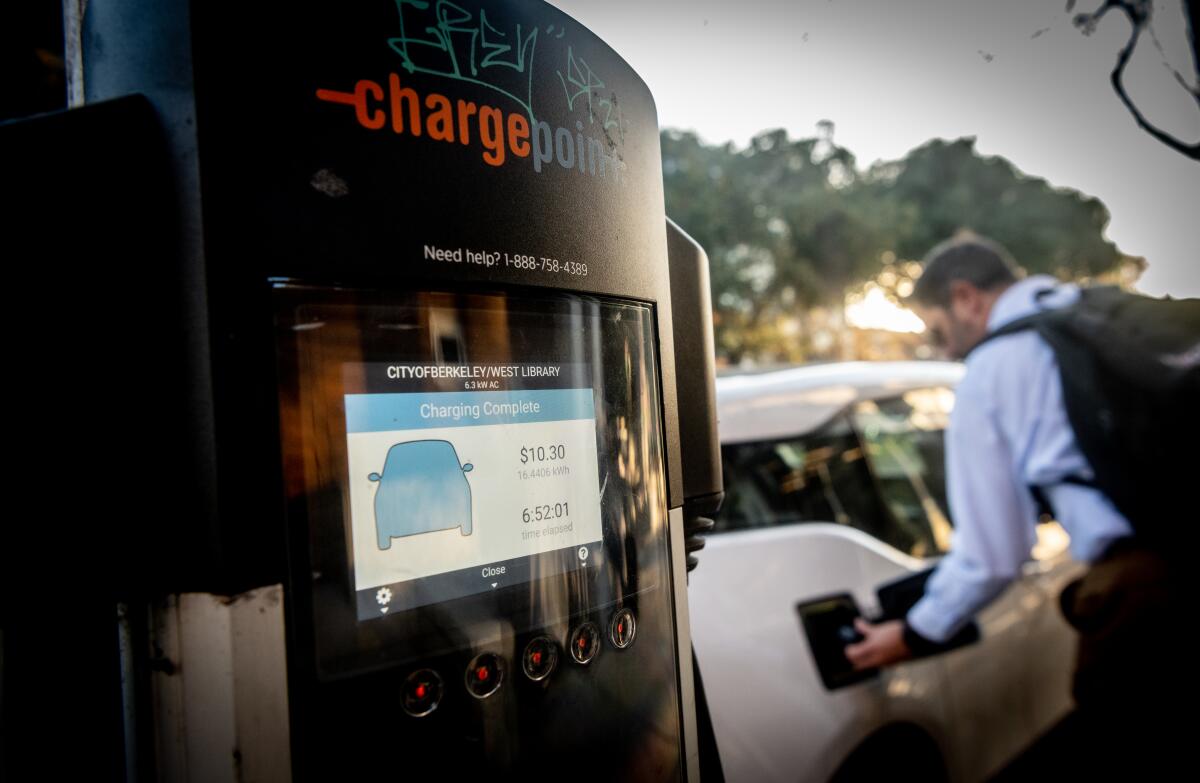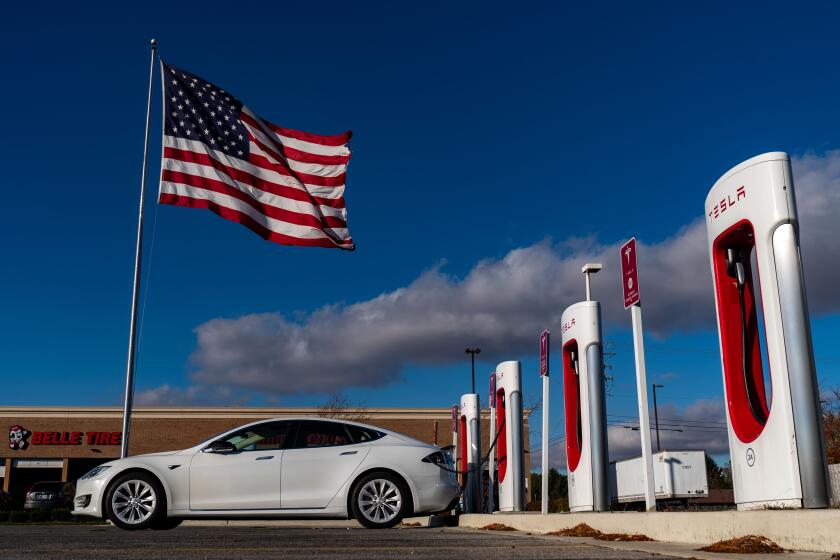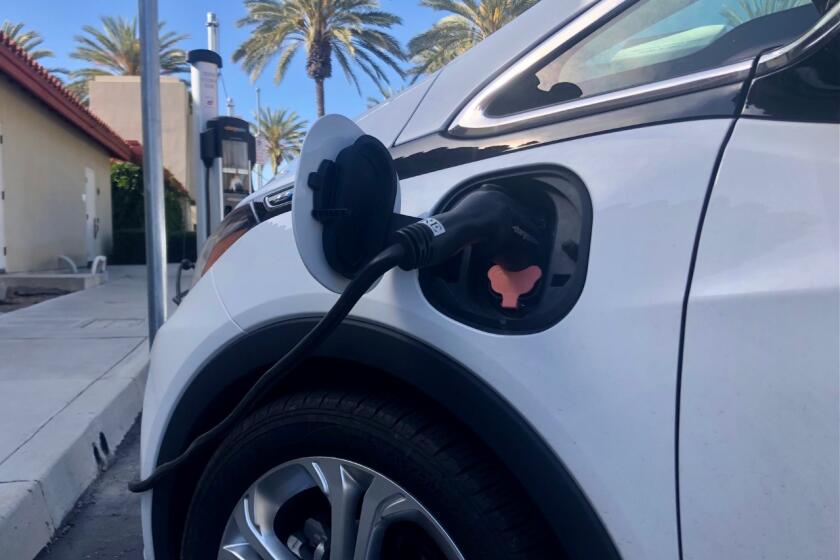Commentary: I’m ready to trade in my electric car. Here’s why

- Share via
I love my electric car. I really do.
I love how I never have to buy gas. I love how it glides quietly up the street. I love that it has so much pickup that I can easily blow past gas-powered muscle cars if I want to. I love having stickers that allow me to drive solo in the HOV lanes. I love that routine maintenance consists of little more than rotating the tires.
But after three years, I am thinking seriously of trading it in for the gas-powered hybrid plug-in version.
Why? Because as much as I love my car, I loathe that I can’t travel around California, a state has led the electric car revolution, with confidence that I can get a charge when I need one.
Yes, there are significantly more public charging stations than when I first got behind the wheel of my Kia Niro EV in January 2020. But there are also significantly more electric vehicles vying to use them — and still vast areas of the state without a single fast charger. Chargers are more reliable now, but still not quite good enough. In 2020, it felt like half the public chargers I tried to use weren’t working. These days, l find only about a quarter are out. This jibes with the experience of researchers who checked public fast chargers at 181 charging stations in the Bay Area last year and found that about 23% weren’t functional.
Not many electric vehicles in the U.S. will be eligible for federal subsidies under Inflation Reduction Act guidelines due to battery and minerals sourcing restrictions.
Even with more chargers, they still aren’t easy to find. I have an app that helps, but it only gives me a general location. Public charging stations are often tucked away in remote corners of parking lots or behind buildings with no helpful signage. They may be accessible only during business hours or, if in a hotel, only for paying guests to use.
It’s not uncommon to locate a charging station and discover that all the chargers are in use or blocked by cars not charging. Or, most frustratingly, the chargers may be offline or nonfunctional — which you may not discover until you park, plug in and try to start the charger. And even if the stars align and you find an available charger that works, it may shut off mid-charge with no warning or reason.
When I chose an electrical vehicle, I knew that meant an extra 30 minutes in travel time for each charging stop during a road trip. But I did not count on the time wasted by having to, for example, backtrack to another station or one out of my way because the charging station on my route was not working.
I did not count on having to wait 60 minutes to charge because the fast charger is not charging very fast today. Or having to spend the wait time baking in the sun because the charging station on the side of a hot freeway has no shade. Honestly, who thought that was a good idea? I didn’t count on having to download a half-dozen apps because each charger company has its own.
I could fill up a book recounting the many frustrating and absurd experiences I have had charging my car over the last three years and three months — and I haven’t even hit 23,000 miles on the car yet.
The Biden administration’s proposed vehicle emission standards would effectively require that two-thirds of cars sold in the U.S. are zero-emission models in a decade.
Things are improving, but if the pace of change over the last three years is an indication of what’s in store for the next three years, the policies to push increasing numbers of EVs by California and the Biden administration are in trouble. It’s not enough to set sales targets and offer tax credits. If we want people to embrace fully electric cars, we have to make it easier to charge up away from home.
That means mapping out charging stations in a comprehensive, thoughtful way that ensures a reliable and easy-to-use network — not leaving it to the whims of the commercial sector, which will build stations where it’s most profitable or convenient. It will require cities to develop plans for how and where to locate public chargers and not just plop them down randomly and call it a day.
As part of the bipartisan infrastructure law, the federal government is spending $7.5 billion to build 500,000 chargers across the nation, which is great. But authorities must take into account the experiences of early adopters like me as they invest. Because if it continues to be this much of a hassle to charge up, it’s going to be tough to convince motorists to go green.
I don’t know if I will trade in my EV, because I really do love it, charging issues aside. But I’m taking a road trip next month, and if the state of public charging isn’t much improved from my last road trip, well, it’s going to be hard not to make the switch.
More to Read
A cure for the common opinion
Get thought-provoking perspectives with our weekly newsletter.
You may occasionally receive promotional content from the Los Angeles Times.













